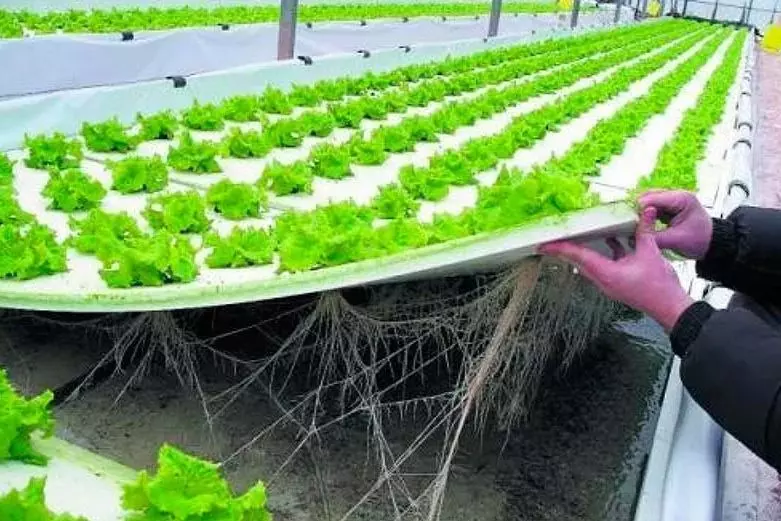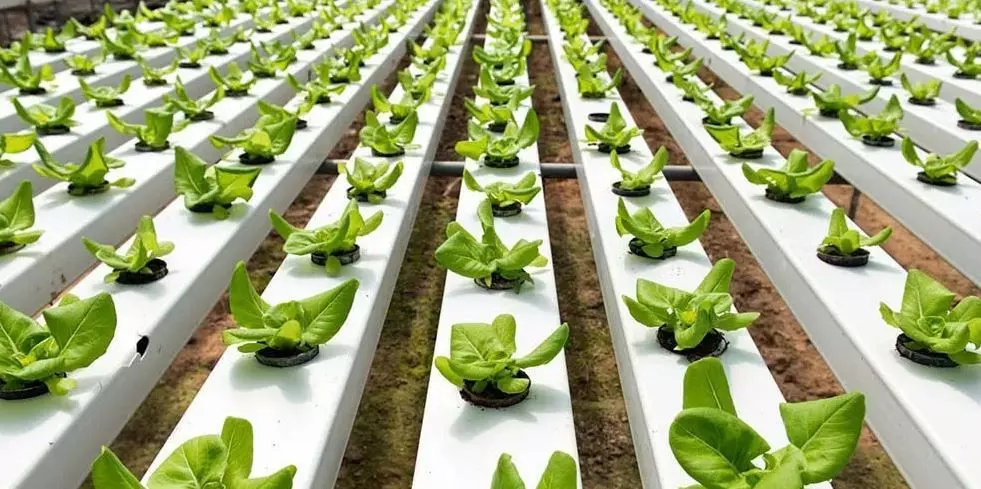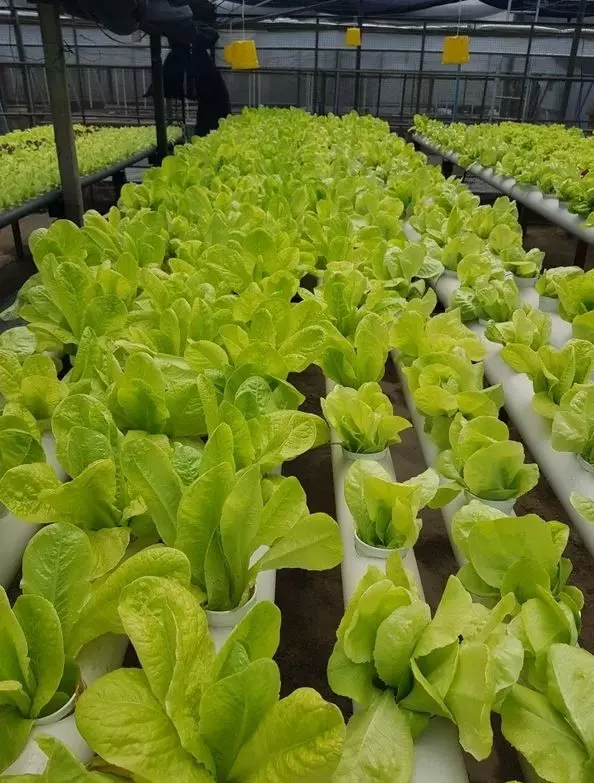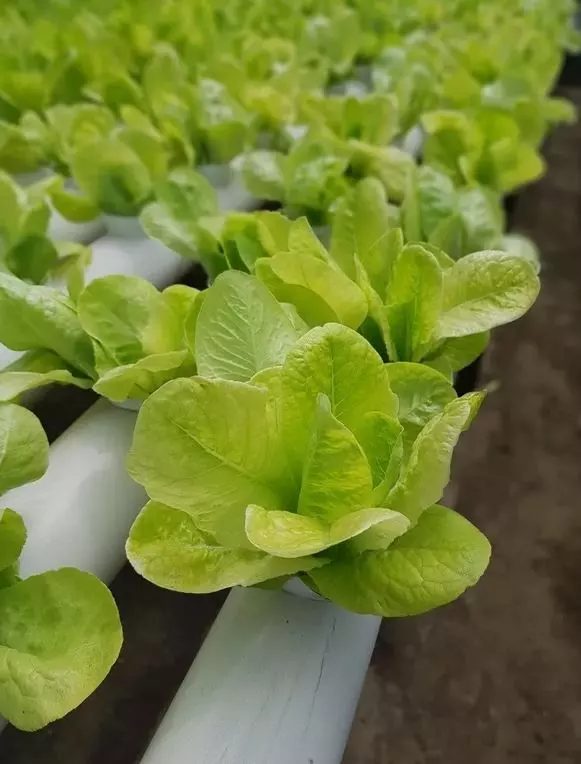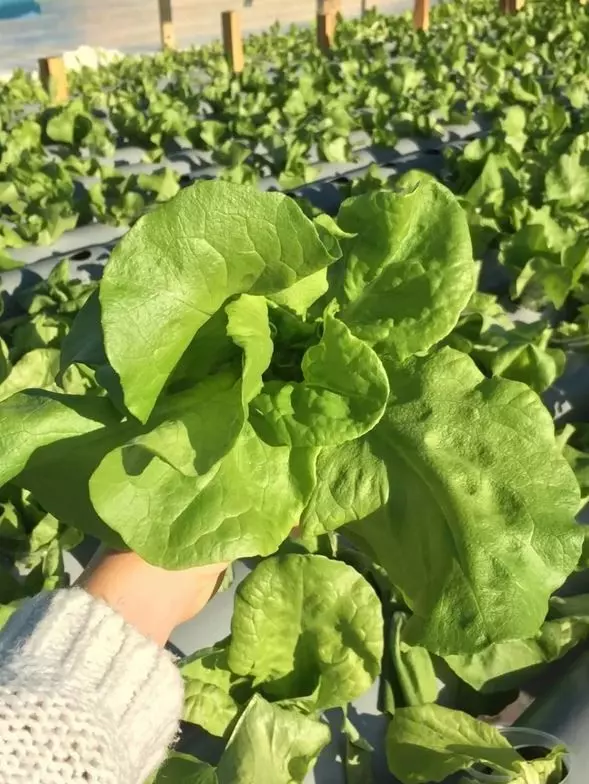Many times our readers ask “Can you grow tomatoes indoors?”. And yes, you can grow tomatoes indoors. One way to do it and get a good yield of tomatoes is to grow hydroponic tomatoes. This way of growing tomatoes indoors, in a greenhouse, is one of the most chosen around the world because it is easier, has excellent crop yield, growing indoors allows you to harvest tomatoes all year long, not just seasonally, and better pest control, etc. One of the advantages when growing tomatoes in a hydroponic system are the yield of tomato compared with traditional cultivation in soil. Growing tomatoes hydroponically is easier than using soil as substrate and the taste is indistinguishable. This is the ultimate guide on How to Grow Hydroponic Tomatoes.
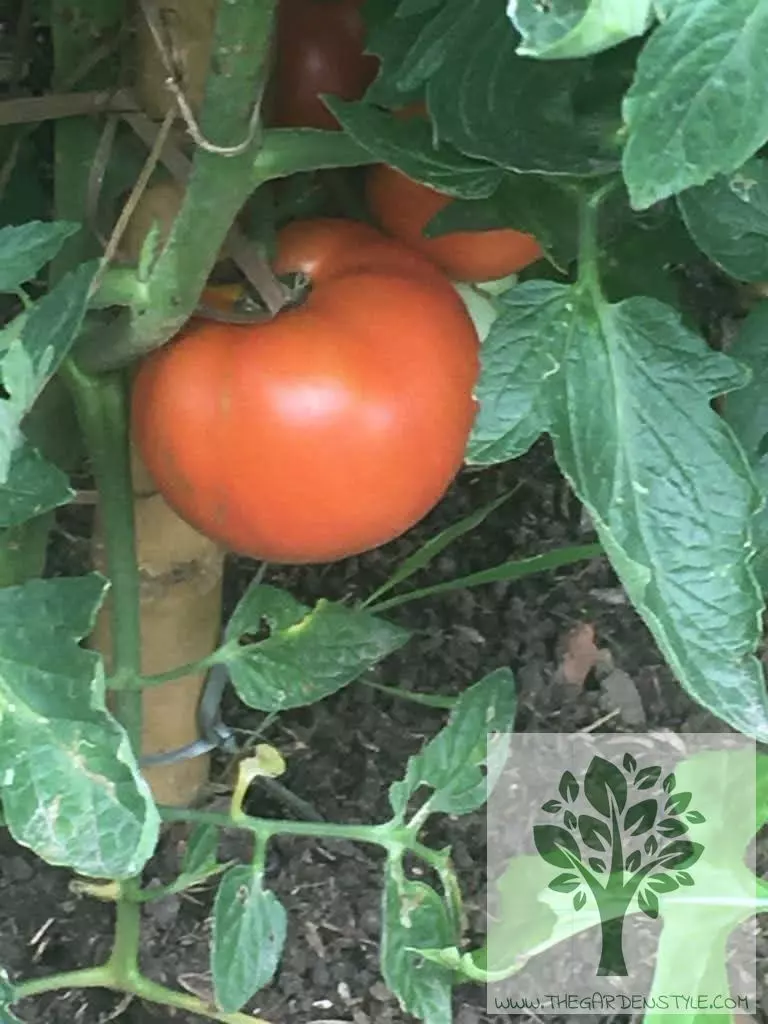
Table of Contents
Benefits and Why to Grow Hydroponic Tomatoes
One of the benefits is that the yield of hydroponic tomato cultivation is at least the same as it would be with tomatoes grown in soil as a substrate. Therefore, you ensure, at least, the same as you would achieve in soil. The big advantage that makes the difference is that you win because you can get one more bunch out of the crop thanks to the fact of transplanting 4 days after the end of the harvest and pulling up the plants. When the sowing is in the soil you must wait 15 days. So that the hydroponic cultivation in time achieves a higher yield in annual days. This greatly increases the pounds of yield weight per hectare.
The second great advantage of hydroponic tomato growing is that tomatoes do not get sick or spread pests as easily. With a tomato crop in the soil, there can be a 50% (or more) loss of yield due to diseases and pests.
Hydroponic Tomato Yield
Hydroponic tomato yield is approximately 300 thousand kilos per hectare, considering both cycles, with 130 and 170 thousand kilos.
There is an important difference in nutritional response when comparing traditional tomato cultivation in soil and hydroponic tomato cultivation.
Soil nutrients are used up. After each harvest, the soil loses nutrients drastically. Some crops are more soil-depleting than others. Crops are rotated and the soil itself should be rotated. You apply potassium or boron and the soil does what it wants with those fertilizers, it is not such a simple effect to control.
In contrast, in hydroponics, you deliver exactly what the plant needs. The conditions are more controlled and that is an advantage. This does not make it easy, but it is easier than traditional tomato growing in soil.
In hydroponics, you can’t go wrong, because you don’t have the protective cushion of soil. You must continue watering even if the electricity is cut off, which is why it is convenient to be equipped with generators. You must verify that the drippers are not clogged, as this happens from time to time, because there are fertilizers that precipitate or behave specially.
Some microelements can produce a kind of algae. It is necessary to be attentive, the first warning is given by the plant because it starts to dehydrate. So, it will be necessary to clean the emitters.
Are Hydroponic Tomatoes Healthy?
Are Hydroponic Tomatoes Healthy? The third great advantage of hydroponic tomato cultivation over traditional tomato cultivation in the soil is that since you no longer work in the soil, you do not need to spray or add chemicals. Therefore, in hydroponic cultivation, there are no chemical residues that affect the tomato, and all the production is organic tomato cultivation by hydroponic cultivation.
Do Hydroponic Tomatoes Taste Good?
Do hydroponic tomatoes taste good? Lastly, a positive effect of hydroponics, not initially foreseen, was the difference in fruit quality. Hydroponic tomatoes were slightly heavier and less hollow than those obtained on the same dates on soil for the same variety. The taste of hydroponic tomatoes is indistinguishable or even better than traditional tomatoes (Scientific Pubmed Report Quality comparison of hydroponic tomatoes)
Learn How to Grow Hydroponic Lettuce – Complete Guide
What is The Best Hydroponic System for Tomatoes?
Best Hydroponic System for Tomatoes. For growing hydroponic tomatoes different substrates can be used. The choice of one or the other is only for logistical reasons since the yield is not affected.
Some of the substrates used for growing hydroponic tomatoes are pine shavings and coconut fiber, among others.
Coconut fiber is quite convenient to use. It is marketed in pallets, which from a logistical point of view can be easier than pine shavings, which are purchased by the cubic meter and must be accumulated well in advance, and then you must fill the bags for its mobilization. Pine shavings are cheaper but more laborious.
The duration of the coconut fiber is for at least six crops. Pine shavings last for four crops and must be replaced.
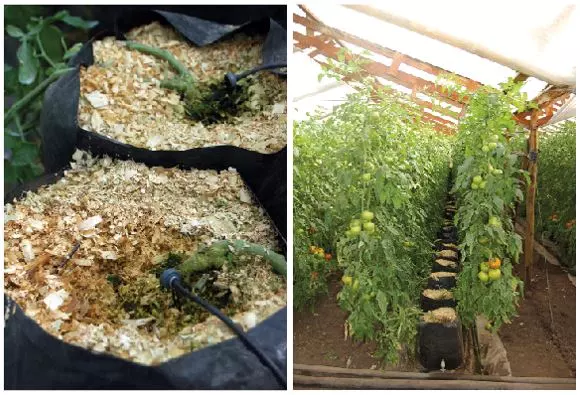
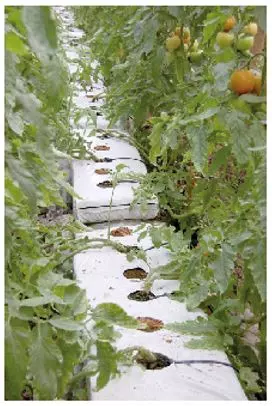
- Fresh, clean scent
- Long lasting use
- Conveniently Expands To 5.0 Cubic feet
How to Grow Hydroponic Tomatoes
According to FAO estimates, in 2019, approximately 181 million tons of tomatoes were harvested in the world, in a cultivated area of 5.0 million hectares. According to IBGE estimates, the Brazilian production in 2020 was approximately 4.0 million tons, in a cultivated area of 81.4 thousand hectares, thus obtaining an average of 49 t/ha.
Due to factors such as the high demand for the product, the high financial return, the search for healthier food, and the uncertainties of field cultivation, many technologies are developed to make tomato cultivation even more viable and, among them, hydroponic cultivation in controlled environments has gained more and more prominence.
If all management procedures are executed correctly and the grower uses genotypes with high yield potential, each tomato plant can produce up to 14 kg of fruit in this system.
Hydroponic Systems for Tomatoes
Here are only a few recommended hydroponic systems for tomatoes.
- GROW INDOORS ALL YEAR: Grow a variety of leafy greens, herbs, vegetables, fruiting plants, and flowers. Low-pressure aeroponics allows for faster plant growth and better nutrient absorption for healthier plants. High quality plastics made from PC-ABS and HDPE, food safe and won’t break or break down over time, preventing microplastics from contaminating your food. Assisted automation allows you to learn how to maintain and manage the system. Germination should be done outside of the system.
- DESIGNED FOR HIGH-YIELD: The system is designed to deliver maximum yield, allowing your plants to fully express themselves. The plant spacing has been engineered to allow for large plants to grow. The side-mounted lights ensure the plants receive light from top to bottom. Light exposure from the six light bars gives the plants 360 degree light exposure. The root zone is contained in the modular vertical pole, and allows the plant’s roots to grow to their greatest potential.
- DESIGNED BY GARDENERS, FOR GARDENERS: We designed the Aerospring to be the most usable hydroponic system. Easy access to the water reservoir for water management. The 20 gallon reservoir, the largest in its class, requires less frequent refilling. Easily detachable internal hose for draining/changing water. The vertical pole is easy to disassemble for cleaning and reassembly, and dishwasher safe. Plastics are opaque, preventing algae from growing inside. The wheelbase allows for easy movement.
- Food Grade Material - Made of food-grade PVC U,this hydroponic grow system produces high-quality plant that are more nutritious and better-tasting than soil-gardened produce because oxygenated water and nutrients are delivered directly to the roots
- Automatic Planting Job - After you settle down this hydroponics growing system, It can be automatic strat work when you connect the water and power on.You will get a significantly higher yield that grows faster consistently
- Easy Assemble and Use - This hydroponic grow kit is very easy to assemble by evryone, Design for fast, maximum-convenience vegetable gardening. Perfect for beginners! No experience needed
- Care for Plant Growth: Greenhouse kits for outdoors protects your plants from frost, excessive sun exposure, and also keeps the interior moist. Closing the roll-up door of the green house can prevents small animals from damaging the plants. Relatively constant temperatures and moist conditions will allow plants to grow earlier and extend the growing season.
- Large Space and Capacity: Product dimensions are 56.3(L) X 28.7(W) x 76.8(H) inches, easy for you to walk in. The walk in greenhouse has 4 wired shelves, each with a maximum weight capacity of 22 lbs.
- Reliable Quality: PE outer protective cover is eco-friendly, non-toxic, and resistant to erosion and low temperature. Sturdy push-fit tubular iron frame with spray paint rust prevention process. Ground nails and rope help stabilize the portable greenhouse and prevent it from being blown down by strong winds.
How to Grow Hydroponic Tomatoes
Let’s continue to review in the next paragraphs about How to Grow Hydroponic Tomatoes.
In the hydroponic system, the roots are placed in a nutritive solution formed by water and nutrients, which helps the growth of the plants. Inert substrates can also be used to support the plants, such as expanded clay, gravel, sand, vermiculite, and tree bark, among others.
The cultivation of tomato plants in a protected environment under a hydroponic system has been growing and becoming more and more prominent, due to the greater protection against climatic phenomena, such as frost, excessive rainfall, high diurnal temperature range, and because it is grown on inert surfaces, avoiding contamination and production losses by intensive soil use.
Besides this, in the hydroponic system, the cultural practices become less laborious and have advantages, when compared to conventional cultivation, such the increase in productivity and quality of the production, precocity of harvest, precision in the control of the supply of nutrients, and reduction in the appearance and use of agrochemicals.
However, the grower should be aware that, in this type of system, there is a high cost of implantation, demand for knowledge, and risks related to the functioning of the equipment, such as the lack of electrical power, which can interrupt the flow of the nutrient solution.
Recommendations When Growing Hydroponic Tomatoes
Recommendations growing tomatoes in hydroponic systems. To implant this cultivation system five factors are necessary: support, good quality water, sun, air, and nutrients. As for the type of hydroponics system, it should be chosen based on the financial capacity of the grower, and generally, the most technologically advanced systems are more expensive.
Simpler systems, with minimal use of equipment, are composed of a greenhouse with benches, a reservoir for the nutrient solution, pipes for conducting the solution, a structure to support the substrates and the plants, and a motor pump set for pumping the solution.
The hydroponic systems can be classified as static or dynamic (as to the movement of the nutrient solution) and as open or closed (as to the return of the solution to the reservoir). It is static when the nutrient solution remains static near or close to the roots. And it is dynamic when there is a movement of the nutrient solution in the profiles.
In the closed system, the nutrient solution is pumped into the top of the hydroponic system and moves by gravity throughout the profile, wetting the roots and nourishing the plants. In the open system, water is pumped through a drip system where the plant is nourished and the nutrient solution does not return to the reservoir.
The type of cultivation that has become most popular in Brazil is the closed system known as NFT (Nutrient Film Technique) or laminar flow technique. In this system, the plants are grown to have their root system inside a channel (hydroponic profiles), where their roots are in intermittent contact (for example, keeping 20 minutes on and 20 minutes off while there is daylight) with the nutrient solution composed of water and nutrients.
The thickness of the nutrient solution flowing through the hydroponic profile should be such that part of the root is in constant contact with the solution, while the other part is free and in contact with oxygen.
To maintain a constant flow of nutrient solution, a motor pump connected to the reservoir is required. For this, there must be an electric power supply, and in its absence, it is necessary to use an alternative source, to avoid possible losses in production, since plants can be affected when exposed to a lack of water.
Let’s continue reading about How to Grow Hydroponic Tomatoes.
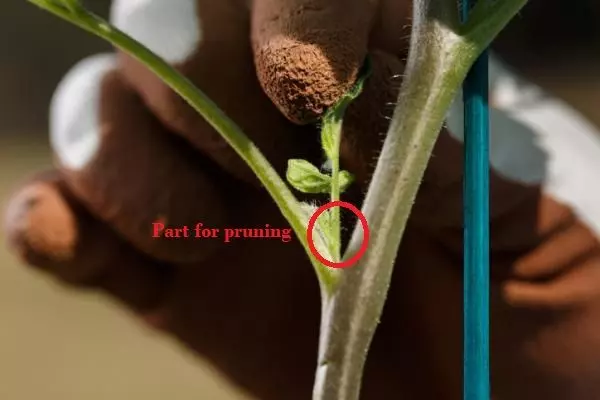
How to Grow Hydroponic Tomatoes: The Benches
During the setup of the hydroponics system, in the NFT system, it is necessary to prepare the benches. The benches should be installed in a way that facilitates the handling of the crop. Normally the height of the waist is used as a reference.
The hydraulic system is composed of reservoirs, pumps, feed pipes, and hydroponic profiles. The reservoir stores all the nutrient solutions and is where the necessary measurements for the control and adjustments of the solution are made.
Normally the reservoir is installed underground, since the return of the solution is done by gravity. Furthermore, it should be emphasized that these reservoirs should be covered and the pipes that carry the nutrient solution and the one that returns to the reservoir should be buried, avoiding the heating of the solution. This is fundamental, especially in regions where the temperature is high.
How to Care for Hydroponic Tomatoes
How to Grow Hydroponic Tomatoes & Care for. If the temperature of the solution exceeds 30ºC there is a reduction in the solubility of the O2 by approximately 80%. To reduce the problem of heating, it is recommended to use tanks with a capacity of two to five thousand liters, because very small tanks get very hot, and very large tanks make it difficult to handle the nutrient solution.
Another fundamental point is the formulation and preparation of the nutrient solution. This will guarantee the full and healthy development of the cultivars. Therefore, it is important to emphasize the importance of using good quality products and a high degree of purity and solubility.
In addition, one should pay attention to the level of oxygen in the solution, electrical conductivity, and pH, to ensure the maximum utilization of the nutrients by the plants. In total, there are 16 essential elements for plants, three of which are non-mineral (C, O, and H), which are supplied directly by the atmosphere, and 13 mineral nutrients that are absorbed directly by the plant’s roots. The latter are divided into macronutrients (N, P, K, Ca, Mg, S), which are absorbed in larger quantities, and micronutrients (B, Cu, Cl, Fe, Mn, Mo, Zn), which are as important as the macronutrients, but absorbed in smaller quantities.
How to Grow Hydroponic Tomatoes: The Crop
Some agricultural companies that work with fertilizers for hydroponic systems provide inputs in the form of nutrient compounds, with formulations suitable for tomato crops, however, most of the time these companies are installed in regions of higher production, and these nutrient compounds are formulated according to the needs of the crop in this region.
Thus, it is important to evaluate these recommended concentrations when using these fertilizers in other regions.
The calculation of the amount of nutrient solution is based on the demand of each phase of the crop and the volume of solution that will be used per plant. For tomatoes, 4.0 to 7.0 L of nutrient solution per plant is recommended. When using substrates for root growth, the nutrient solution should be applied in a way to avoid prolonged drying or waterlogging of the substrate.
Nutrient Solution for Hydroponic Tomatoes
Nutrient Solution for Hydroponic Tomatoes. To prepare the nutrient solution, it is recommended that each macronutrient be diluted in a bucket before being added to the reservoir, which should already be about half full with water.
As for the micro-nutrients, it is recommended to prepare a stock solution, before adding to the reservoir, containing all the micro-nutrients, except for iron, which should be chelated and added afterward.
The nutrient solution, or the solid substrate receiving the nutrient solution, should be protected from light to avoid the development of algae, which will compete for nutrients with the plants. The electrical conductivity (a variable used to monitor the amount of salt in the solution) of the nutrient solution varies according to the phase of the crop.
Generally, a solution of 1.5 mS.cm-1 is used to start with, and in more demanding phases a solution of 3.0 to 3.5 mS.cm-1 is applied. The pH of the solution should always be well controlled, between 5.5 and 6.0, a range that guarantees better use of nutrients by the plants.
Growing Hydroponic Tomatoes
Let’s continue reviewing these tips on how to grow hydroponic tomatoes. In the next paragraphs, we will review the type of substrate to grow hydroponic tomatoes and how to pollinate hydroponic tomato crops.
Regarding the management of the crop, in the hydroponic cultivation system of tomatoes, there is a lower demand for manpower and ease of management. There is no need for weeding and hoeing. In the process of pruning, staking, and harvesting, the height of the stands facilitates the work.
The control of pests and diseases is performed less frequently if compared to the conventional system, since the climatic variables are, in a way, more controlled, and the greenhouse shading works as a barrier against several types of pathogens. Furthermore, by being grown directly on the profiles or inert substrate, soil diseases are avoided.
As the growth habit of table tomatoes is of the indeterminate type, the use of stakes is necessary. The stems must be tutored, avoiding contact of the leaves, stem, and fruits with the soil. This process begins approximately 15 to 20 days after transplanting, continuing every 8 to 15 days during the crop cycle. Among the types of staking used, the individual vertical staking with ribbons is the most used.
How to Prune Hydroponic Tomato Plants
Many readers after about How to Prune Hydroponic Tomato Plants. Pruning is a frequent and essential practice for the culture, seeking to maintain a balance between the vegetative and reproductive parts to obtain better quality fruits. The types of pruning used are: pruning, thinning out, and fruit thinning (depending on the purpose of production).
Pruning aims to remove the “thieving” shoots and, consequently, avoid competition for assimilates. These robber shoots can be identified by their insertion position on the plants. They originate in the leaf axils and should be eliminated when they reach 2.0 to 3.0 cm, leaving only the buds of the main apex and lateral buds of interest to the grower.
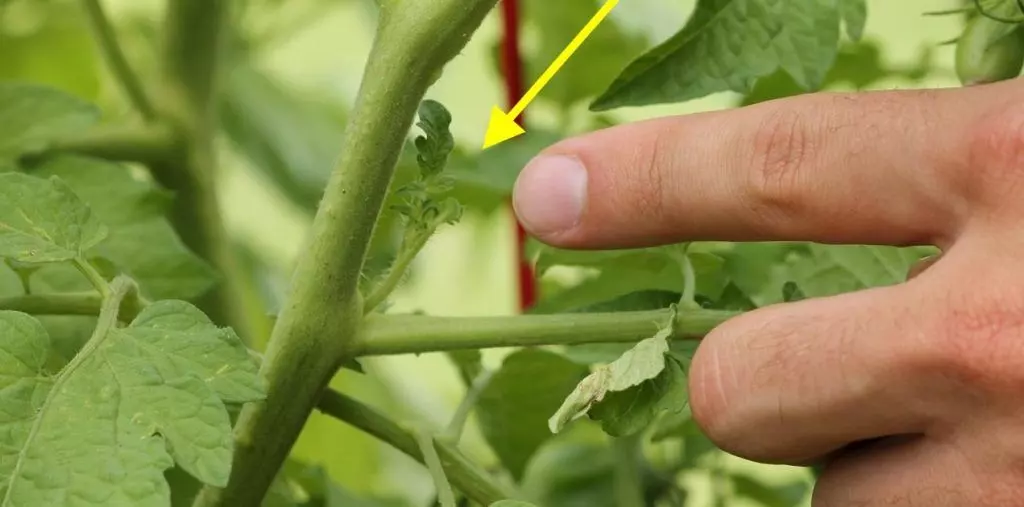
The trimming, or apical pruning, consists of the removal of the terminal bud and aims to help control the height of the plant, thus favoring the management of the harvest, the management of plant health, the aeration, and the incidence of light inside the rows.
The thinning of the fruits is a practice that consists of the removal of some fruits in the cluster, to improve and standardize the size of the fruits.
Want to learn more about Pruning Tomatoes? Read Prune Tomato Plants: How to Prune Tomato Plants for Maximum Yield & When
Pollination When Growing Hydroponic – How to Pollinize When Closed Environment
Pollination When Growing Hydroponic – How to Pollinize When Closed Environment. Another necessary practice in this cultivation system is pollination since the plants are cultivated in a closed environment, where there is no action of insects and wind speed is reduced.
For fruit formation to occur, fertilization is necessary, and even though tomato plants are autogamous, the flowers have to vibrate so that a larger amount of pollen grains can be deposited on the stigma, resulting in a larger number of fertilized ovules and, as a consequence, a larger number of fruits. For this, it is recommended to use blowers or even move the central staking line.
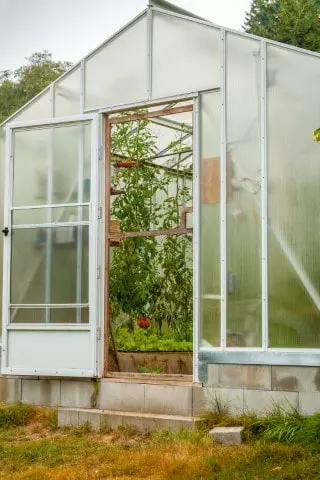
Phytosanitary Control for Hydroponic Growing
As for the phytosanitary control, as mentioned before, in the hydroponic cultivation system it is less intensified, due to the better control of the climatic variables. However, as the tomato is a crop very susceptible to the attack of pests and diseases, the producer must always be attentive.
In hydroponic cultivation, the use of biological control with insect parasitoids is not efficient, since the alteration of the wavelength inside the greenhouse makes the orientation of these parasitoids difficult. It is necessary to monitor and control pests with the use of traps and, when necessary, the use of chemical products registered for the culture.
The harvest of the fruits starts approximately 60 days after transplanting and is based on morphological aspects, being done after they reach physiological maturity or ripe-green stage.
As a novelty in the hydroponic cultivation of tomato plants, the occurrence of a large number of sprouts stands out, which has been used to perform vegetative propagation via staking.
This vegetative propagation is an alternative to reduce costs with the production of seedlings, besides increasing the precocity of the plant, thus reducing the time to start harvesting. Another interesting point, besides the increase in production, is the superior quality of these fruits. By growing in conditions close to the ideal for the culture, the nutritional content of the fruits is more enriched.
Advantages of Growing Hydroponic Tomato Plants
One of the great advantages of Growing Hydroponic Tomato Plants is the increase in productivity. In Brazil, the average yield of tomato crops grown in the field is around 70 t/ha. But in hydroponic crops, this average can jump to yields over 130 t/ha.
It is also worth mentioning the potential of hydroponic crops to further increase yields. For example, in Japan, highly condensed hydroponic crops have reached average yields of up to 500 t/ha/year.
The higher yields achieved in hydroponic tomato crops are due to better control of growing conditions, with the plants being less exposed to pests and diseases; better nutrition and irrigation; and temperature and humidity acclimatization in the greenhouse. The more controlled environment and the less stressed plant will allow for greater production.
The fruits in this system are not at the mercy of the weather, as in open field crops, guaranteeing more beautiful and higher quality fruits, an important point for commercialization.
The use of technology in hydroponic crops requires qualified professionals to constantly monitor the system. The balanced nutrient solution is key to the success of the production. One must pay attention, mainly, to the pH values, to avoid the precipitation of micronutrients, and the electrical conductivity, related to the ionic concentration and the absorption of nutrients by the plants.
The nutritional imbalance and lack of control of the quality parameters of the nutrient solution may imply the loss of the entire production.
We hope you found this article about How to Grow Hydroponic Tomatoes
Recommended articles for you:
How to Grow Tomatoes: A Guide for Beginner Gardeners
Yellow Leaves on Tomato Plants: Causes & Treatments
Leaves Curl Up on Tomato Plant – 5 Reasons
Fertilizer for Tomatoes: Maximizing Growth and Flavor
Learn How to Grow Hydroponic Lettuce – Complete Guide
